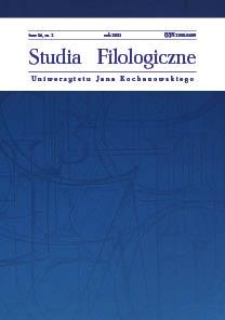Biblioteka Cyfrowa Uniwersytetu Jana Kochanowskiego udostępnia 13 273 obiektów cyfrowych
Obiekt
Tytuł: A brilliant invention grinds to a halt:Panoramic images of the deserted city in the pandemic era and their cultural significance
Twórca:
Tytuł publikacji grupowej:
Abstrakt:
Soon after the outbreak of COVID-19 and the imposition of nationwide lockdowns, images of empty cities have become one of the most vivid visual themes in media coverage of the pandemic. In my essay, I want to reflect on the evocative power of those pictures. On the one hand, depopulated streets made their mark because of their stark exceptionality. Something seemingly impossible happened. People and cars disappeared from the perpetually busy places. At the same time however, images of abandoned streets were strikingly familiar. We knew them too well from countless dystopian and catastrophic films. The outbreak of the pandemic also gave a foretaste of a much bigger and radical collapse that might come with the accelerating climate change. I want to use the imagery of the empty streets in the locked down cities as a starting point for a broader reflection on the growing significance of the panoramic shots and the bird’s eye perspectives of the city in contemporary culture. Such images have become a staple of visual communication today. The panoramic or long aerial shot of a city, most often captured by drones, has become a ubiquitous, almost obligatory, motif in feature films, televisual series, documentaries and news programmes. Referring to a variety of examples, I argue that the panoramic shots reveal and reassert our enduring fascination with the city. They also demonstrate complex rhetorical and symbolic potential of the broad urban imagery. Shots from a distance constitute a celebration of the city but also unmask a dissatisfaction with the present and desire for a change.
Miejsce wydania:
Opis fizyczny:
ISSN:
Wydawca:
Wydawnictwo Uniwersytetu Jana Kochanowskiego w Kielcach
Data wydania:
Identyfikator:
oai:bibliotekacyfrowa.ujk.edu.pl:13623 doi:10.25951/4734
Język:
Jest częścią:
Studia Filologiczne Uniwersytetu Jana Kochanowskiego
Ma część:
Typ:
Prawa dostępu:
Format:
Kolekcje, do których przypisany jest obiekt:
- Biblioteka Cyfrowa Uniwersytetu Jana Kochanowskiego > Wydawnictwo Uniwersyteckie
- Biblioteka Cyfrowa Uniwersytetu Jana Kochanowskiego > Wydawnictwo Uniwersyteckie > Wydawnictwa ciągłe
- Biblioteka Cyfrowa Uniwersytetu Jana Kochanowskiego > Wydawnictwo Uniwersyteckie > Wydawnictwa ciągłe > „Studia Filologiczne Uniwersytetu Jana Kochanowskiego”
Data ostatniej modyfikacji:
18 gru 2025
Data dodania obiektu:
18 gru 2025
Liczba wyświetleń treści obiektu:
0
Wszystkie dostępne wersje tego obiektu:
https://bibliotekacyfrowa.ujk.edu.pl/publication/4734

